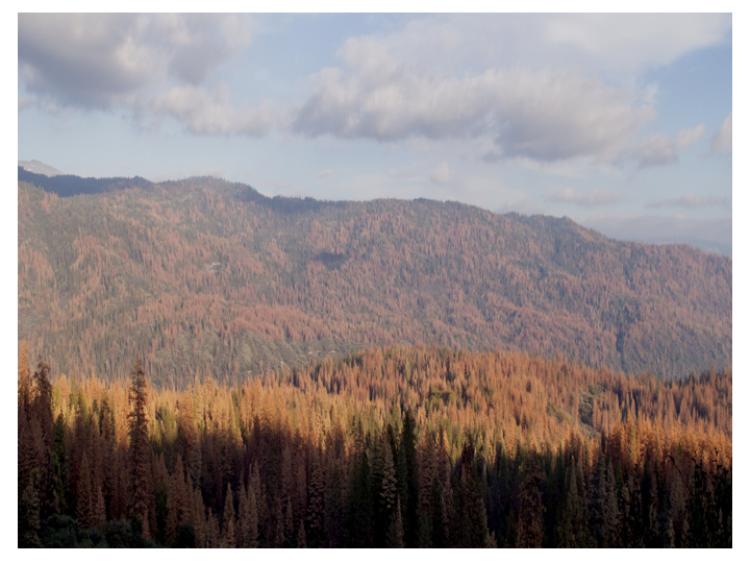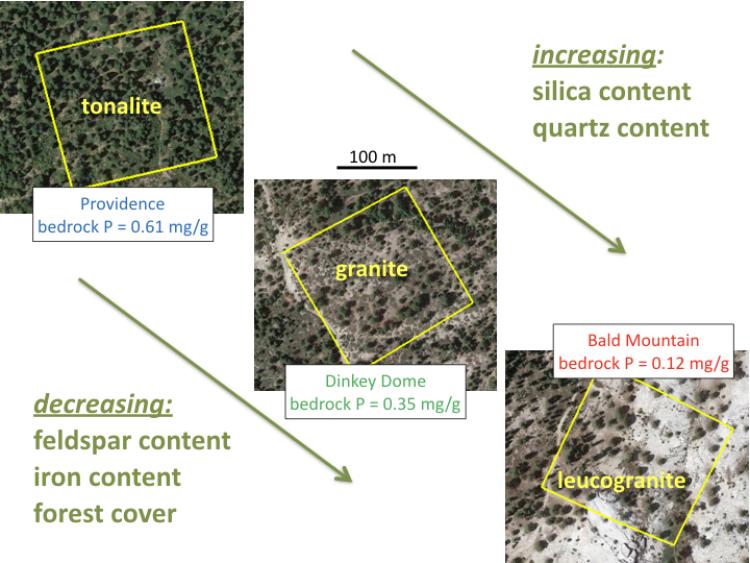The availability of water and nutrients in soil and weathered rock influences the distribution of vegetation and its vulnerability to land use and climate change. We explored these relationships by combining geochemical and geophysical measurements at three mid-elevation sites in the Sierra Nevada, California, where a recent historic drought killed millions of trees. Forest cover correlates strongly with bedrock composition, implying strong lithologic control of the ecosystem. We evaluated two hypotheses about bedrock-ecosystem connections: 1) that bedrock composition influences vegetation by moderating plant-essential nutrient supply; and 2) that bedrock composition influences the degree of subsurface weathering, which in turn influences vegetation by controlling subsurface water-storage capacity. To quantify subsurface water-holding capacity, we used seismic refraction surveys to infer gradients in P and S-wave velocity structure, which together reveal variations in porosity in saprolite and weathered bedrock. We combined the geophysical data on porosity with bedrock bulk geochemistry measured in previous work to evaluate the influence of water-holding capacity and nutrient supply on remotely sensed estimates of ecosystem productivity. Our results show that more than 80% of the variance in ecosystem productivity can be explained by differences in bedrock phosphorus concentration and subsurface porosity, with phosphorus content being the dominant explanatory variable. This suggests that bedrock composition exerts a strong bottom-up control on ecosystem productivity through its influence on nutrient supply and weathering susceptibility, which in turn influences porosity. We show that vegetation vulnerability to drought stress and mortality can be explained in part by variations in subsurface water-holding capacity and rock-derived nutrient supply.
Hosted by Suzanne Anderson
Cliff Riebe
Department of Geology and Geophysics
University of Wyoming



